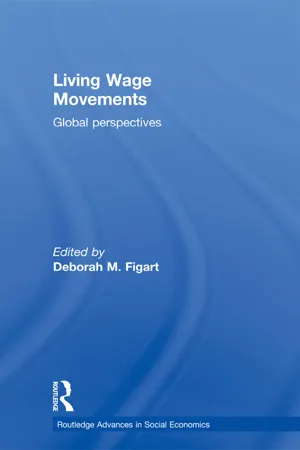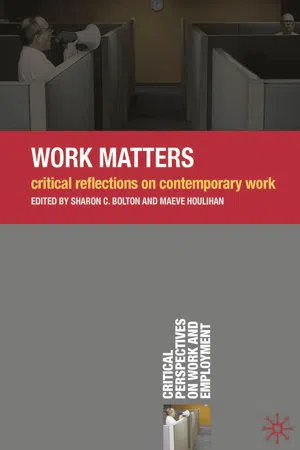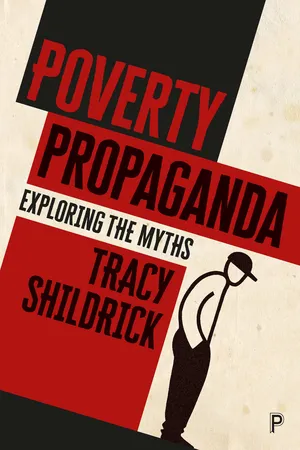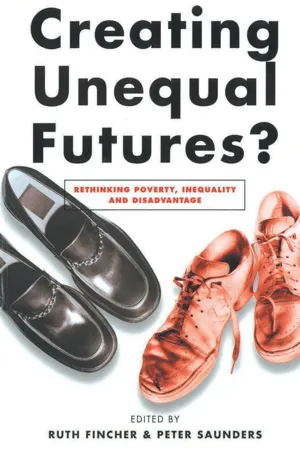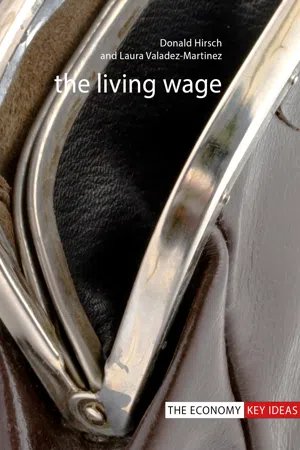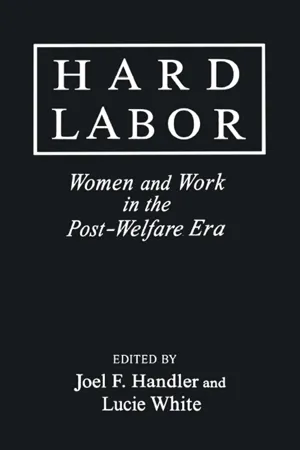Economics
Low Wage Workers
Low wage workers are individuals who earn wages at or near the minimum wage level. They often work in industries such as retail, food service, and hospitality. Low wage workers may face challenges such as financial instability, limited access to benefits, and difficulty in meeting basic needs due to their low earnings.
Written by Perlego with AI-assistance
Related key terms
Related key terms
1 of 4
Related key terms
1 of 3
8 Key excerpts on "Low Wage Workers"
- eBook - ePub
Living Wages and the Welfare State
The Anglo-American Social Model in Transition
- Wilson, Shaun, Shaun Wilson(Authors)
- 2021(Publication Date)
- Policy Press(Publisher)
One path for higher minimums to achieve a broader predistributive impact occurs through dual-income households, particularly where formal skill levels are mixed between the household’s wage-earner members. Levin-Waldman and Whalen (2007, p 66) explain in the US context:if [minimum wage workers] are not the primary earners, they are at least essential secondary earners (defined as those earning as much as half their family’s total income). Those who are earning slightly less than half of the total family income could be considered essential secondary earners because their income is essential to the maintenance of their families.Better-paid secondary earners keep working families in the middle of the income distribution, just as higher minimum wage floors reduce poverty and social stress on the households of poor workers. Minimum wage workersThe rest of this chapter looks at the social and occupational profile of minimum and low-wage workers, ending with a survey of current minimum wage-setting arrangements across the six countries. Public perceptions of minimum wage workers are captured by stereotypes: a younger worker in a temporary job who is combining work with other life goals, particularly study; a recently arrived migrant who – with some difficulty – is imagined to progress through the narrow opportunity structures of wage labour and home ownership; and a ‘drifter’, following some mix of precarity and dreams across geographic locations, jobs, and welfare.Often, commentators in public debates write about minimum wage workers when they really mean a larger group of poorly paid workers or even the working class more generally. This cultural extrapolation is actually useful for two reasons. First, minimum wage workers often migrate into better-paid jobs that are still reasonably low paid, and second, minimum wage policies have ‘spillover’ impacts on the pay and job prospects of many more low-paid workers. For these reasons, this chapter not only focuses on the profiles and experiences of minimum wage workers, but also low-income workers generally. A broader focus on the bottom third of workers also helps with obtaining a sociological profile, given the limited sample sizes available in high-quality cross-national survey data. The ISSP’s most recent Work Orientation module offers insights into four of our target countries in the decade before COVID-19, where low wages – not job insecurity – emerged as the dominant pressure faced by workers. - eBook - ePub
- Deborah M. Figart(Author)
- 2004(Publication Date)
- Routledge(Publisher)
Advocates justify this market intervention by arguing that public tax dollars should not be used to subsidize employers who pay poverty-level wages – echoing the parasitic industries argument advanced by the Webbs a century earlier. By 2003, over 100 US cities, counties, school boards, and other public entities have passed such living wage ordinances. 1 In other countries, policy responses include campaigns to raise the minimum wage (wage floors), engaging in low pay campaigns, and securing better wages, benefits, and working conditions for workers in part-time, contingent, temporary, or casual employment. All of these efforts have required coalitions and cooperation among government, labor, and community groups. While hours of work play a role in determining low pay, low-paid workers can also be found in year-round full-time jobs. The issue of poverty-level wages is especially crucial for women and workers from racial and ethnic minority groups (Sklar et al. 2001). Across the globe, the share of low-income workers is disproportionately female, and most likely employed in less-skilled sales and service occupations. These workers are cleaning buildings, preparing and serving food, tending to children, the elderly, and the sick, performing routine office tasks, or selling and sewing garments. Three recent studies underscore the seriousness of the problem. About one in six non-elderly Americans lives in a working poor family (see Kazis and Miller 2001). Depending on the definition, about one in seven employees in the European Union is low paid (European Foundation for the Improvement of Living and Working Conditions 2002). The incidence of low pay is greater for women than men in the USA, the European Union, Canada, Australia, and New Zealand (Jepsen 2000: Table 1) - eBook - ePub
Work Matters
Critical Reflections on Contemporary Work
- Sharon Bolton, Maeve Houlihan(Authors)
- 2009(Publication Date)
- Bloomsbury Academic(Publisher)
Since 2000, the US has lost 3.5 million jobs in manufacturing – jobs that were once considered a stepping stone to the middle-class (Greenhouse, 2008a). Reflecting this trend, in our state of Connecticut, as is the pattern elsewhere within the US, thousands of manufacturing jobs have been replaced by service sector jobs; and currently, the income distribution of Connecticut residents is among the most unequal in the nation. Recent projections through 2008, prepared by the Connecticut Department of Labour, describe an economy that will continue to fracture, producing greater inequality, instability, and insecurity in the workforce. While manufacturing employment is historically associated with good jobs, with good wages, benefits, and job security, service sector employment is generally associated with poor jobs with low wages and few benefits. But as the Connecticut Centre for a New Economy (2001) points out, there is nothing inherent in these jobs that presupposes high or low pay – these ‘good jobs’ are the result of collective action and workers organising to better their conditions. In this chapter we present an overview of the different components of the low-wage workforce (the very poor, the working poor, the near-poor and middle-skilled jobs, and the ‘disposable American’) and the experiences of individuals working in these jobs. We also comment on the political economy that has created the current situation and future prospects for change.Low Wage Workers
The very poor
There are now 37 million people in the US living in poverty and half of all families living in poverty are single mothers with children. US Census data from 2005 documents that minority communities (especially African-Americans and Latinos) are disproportionately poor; and women and their children are disproportionately poor. Single mothers are more likely to be very poor than other families with children; and households with children maintained by women of colour alone have the highest rates of income inadequacy (i.e. unable to meet basic needs) (IWPR, 2007). Poverty rates have been rising since l999 and are now above where they stood in l973. Education reduces the rate of income inadequacy, especially for people of colour and/or women. As Pearce argues, ‘families are not poor because they lack workers or work hours ... but because their wages within their occupations are inadequate to meet basic expenses’ (2007, p. 3).The very poor, mainly female-headed households, are affected by neoliberal public policies that limit welfare and other government safety-net programmes which have often been necessary for survival. These very low-income women are likely to be precariously attached to the labour market and their work experience is generally unstable, with low wages, without benefits, and without worker rights. Working in minimum wage jobs, we have noted above how low their income is. - eBook - ePub
Poverty Propaganda
Exploring the Myths
- Shildrick, Tracy(Authors)
- 2018(Publication Date)
- Policy Press(Publisher)
As Jones (2011) describes it, more and more people are 'earning their poverty', and it is not just insecure work that is problematic but also low pay, and the two issues are often found to go hand in hand. Low pay is a complex issue, as not everyone in a low-paid job will live in a family experiencing poverty (for example, a middle-aged, middle-class person working part-time in a shop may receive a low wage but may also have other incomes coming into their household, and possibly also savings and/or inherited wealth). None the less, low pay is a particularly important issue in understanding poverty in the contemporary context.Low pay and in-work poverty are relatively marginal in political and public debates on poverty. Corlett and Gardiner point out that 'even before the financial crisis hit too many employees in Britain were low paid by the standards of the day and relative to other countries' (Corlett and Gardiner, 2015, p 4). Growth in the numbers of people in low-paid jobs is one of the most significant factors to affect the British labour market since the mid-1990s (Yoon and Chung, 2016). The so-called National Living Wage (NLW), announced in 2015 by then Chancellor George Osborne and introduced in April 2016, was a purely deceptive measure (Veit-Wilson, 2015) designed to seduce the public into believing the rhetoric of a self-styled 'party of the workers' in the hope that the realities of low-paid, insecure employment would continue unabated and largely unnoticed. ONS estimates that in 2016 there were 362,000 jobs paying less than either the National Minimum Wage or the NLW, and suggested that these constituted 1.3% of employee jobs in the UK.A further problem is that since the onset of the recession in 2008 there has been increased competition for low-paid and insecure jobs. Unemployment and, importantly, under-employment are becoming a major problem (ONS, 2016). As unemployment increases, better-qualified people are forced down the employment ladder, placing further pressure on those already at the bottom. In the UK it is estimated that 10% of workers (around three million) are under-employed (ONS, 2016). Elementary occupations, including cleaning, bar work, sales and security, are the largest group of occupations where the under-employed are located (ONS, 2016). The group is further segmented by age, with just under 20% of 16- to 24-year-olds being under-employed in 2014, and by gender, with 11% of female workers being under-employed in 2014, as compared with 8.9% of male workers (ONS, 2016). Increasingly the labour market in Britain, as elsewhere, might best be described as 'a "buyers market" that operates in contrast to a "sellers market" which occurs when there is a shortage of labour' (Cote, 2014, p 84). Aguiar writes ofthese shifts in job quality that were in train even before the financial crisis hit: - eBook - ePub
Creating Unequal Futures?
Rethinking poverty, inequality and disadvantage
- Peter Saunders(Author)
- 2020(Publication Date)
- Routledge(Publisher)
Developing a sociological picture of households, as these occupational profiles allow us to do, enables us to suggest possible outcomes. We know from the way the labour market is developing that blue-collar occupations—particularly at the less-skilled end—are likely to come under increased pressure as the economy restructures in ways unfavourable to manufacturing (O’Loughlin and Watson 1997; DEETYA 1997). Downward pressures on wages, particularly in the award-only sector, will also be unfavourable to these occupations. This will be offset to some extent by growth in ‘pink-collar’ service sector jobs (such as waiters and cashiers), but these are low-paying jobs whose future growth will not lead to higher wages. Consequently, the blue-collar reference person with a pink-collar spouse may find little improvement in their household’s earning situation. Blue-collar/blue-collar households face bleak earnings prospects, unless both end up working much longer hours, as has happened in the United States. Only low-wage households with clerical workers can expect to maintain or marginally improve their situation. Overall, it is clear that low-wage/low-wage households will remain a significant feature of the Australian economic landscape. At the other end of the scale, dual-earnings households drawn from professionals and managers will continue to prosper. Indeed, most developments in the labour market have always favoured these occupations and will continue to do so. In other words, many low-paid workers live in low-wage households, and labour market inequality for households in Australia looks certain to increase as the dynamics generating inequality intensify.THE ECONOMICS OF UNEMPLOYMENT AND LOW WAGES8
In late 1998 a group of economists, known as the ‘Five Economists’ (Dawkins et al. 1998), proposed tackling the problem of unemployment by bringing in wage cuts for the low-paid workforce combined with a tax credits scheme to compensate for the wage cuts.9 In this section we respond directly to the Five Economists, and indirectly, to the more general proposition that the low-paid should carry the burden for solving unemployment.The Five Economists’ proposal entails restraint in both aggregate wages and relative wages. Aggregate wages reflect the average price of labour across the economy. Relative wages reflect the prices of labour for particular sub-groups in the workforce, such as less skilled workers, or teenagers, for example. Restraint in aggregate wages amounts to an ‘incomes policy’, but the mechanism proposed for implementing it is seriously deficient. The Five Economists suggest that curtailing Award safety net increases would lead to a reduction in aggregate wages growth but this proposition is overly optimistic. It ignores the extent to which wages growth is largely unregulated among the two-thirds of the workforce outside the Award stream. - eBook - ePub
What Works for Workers?
Public Policies and Innovative Strategies for Low-Wage Workers
- Stephanie Luce, Jennifer Luff, Joseph A. McCartin, Ruth Milkman, Stephanie Luce, Jennifer Luff, Joseph A. McCartin, Ruth Milkman(Authors)
- 2014(Publication Date)
- Russell Sage Foundation(Publisher)
Part I
Low-Wage Work in Historical Perspective
Passage contains an image
Chapter 1
An Economy That Works for Workers
Alice O'ConnorFOR THE PAST three decades, the problem of low-wage work has become a central preoccupation among poverty analysts and advocates. While it would be an exaggeration to say they have coalesced around a unified policy agenda, collectively they have produced an impressive body of knowledge about the deteriorating prospects for low-wage workers in our New Gilded Age economy (see, for example, Danziger and Gottschalk 1995; Ehrenreich 2001; Freeman 2007; Greenhouse 2008; Handler and White 1999; Holzer and Nightingale 2007; Munger 2002). As subsequent chapters in this volume show, they also point us to a variety of strategies to empower low-wage workers or otherwise “make work pay” through tax subsidies and other targeted policy interventions, unionization and living wage campaigns, education and training programs, and employee profit-sharing plans.As most people involved in this work would acknowledge, however, such strategies can only do so much in the face of the seemingly relentless long-range trends—rising income and wealth inequality, declining unionization rates, the global outsourcing of once-better-paying jobs, and now the vastly unequal fallout from the Great Recession—that keep workers from getting a stable foothold in the economy, let alone getting ahead. What workers really need is an economy that is not so steeply stacked against them—one that certainly would look very different from the deeply inequitable and otherwise undemocratic version of capitalism that prevails in the United States today. A discussion about what works for workers, then, must situate strategies to improve the conditions of low-wage workers within a broader strategy of political economic and social policy reform. - eBook - ePub
- Donald Hirsch, Laura Valadez-Martinez(Authors)
- 2017(Publication Date)
- Agenda Publishing(Publisher)
responses by employers to increased labour costs resulting from a wage floor may be more varied and complex than adjusting employment levels to compensate for the higher wage. These may include passing on the additional cost in higher prices (which is more feasible if all one’s competitors also face the higher cost of a compulsory minimum wage, making them unable to maintain the original price) and reducing working hours but not the number of jobs. As discussed later, while the latter response is similar to cutting jobs in terms of reducing labour supply, it may be seen as less socially counterproductive than increasing wages for some workers only to make others unemployed. If the same low-paid workers have to put in fewer hours for a similar total pay packet, this could be seen as socially beneficial, although in such a case the question arises of whether that total truly produces a “living wage”, if overall remuneration has not increased.5 There are strong possibilities of substitution of one kind of labour for another as a result of a minimum wage being imposed, so that overall employment might not change. This may, for example, take the form of more skilled jobs being created to replace unskilled ones, as firms redirect investment into jobs that can support the higher wage. It can also potentially cause substitution by age if, as in some cases, there are different minimum wage rates for different age-groups. However, a nineteenth-century objection to minimum wages, which held that there is only a given pot of money available to pay all workers’ wages (“wage fund theory”) has been discredited. It is now recognized that the amount of wealth that can be allocated to pay is variable, even in the short term, and influenced by labour supply and demand.6 Over the economy as a whole, increased consumption - eBook - ePub
- Joel F. Handler, Jay D White(Authors)
- 2019(Publication Date)
- Routledge(Publisher)
We start with the proposition that, at least in the near future, most low-skilled women will be trying to support themselves in the low-wage labor market. The first order of reform, then, is to make sure that jobs are available and to improve the earnings from these jobs. While the long-term goal for our society should be a full-employment economy with well-paying jobs, the reality of the near future, at best, seems to be a relatively full-employment economy with large numbers of low-wage jobs. Such an economy will not reduce poverty. What has to be done is to make work pay.Current policies assume that jobs are available for all who want them. As discussed, although the precise extent of job availability is difficult to determine since no systematic data are being collected on job vacancies, available evidence does indicate that there are many more low-wage job seekers than there are available slots.62 We know, for example, that in a labor shortage economy the employment opportunities of those most disadvantaged improve markedly. Richard Freeman found that in a tight labor market (unemployment rate under 4 percent) the employment opportunities and the hourly wages for disadvantaged young men improved considerably.63What is required is an aggressive public policy to stimulate new jobs in economically depressed areas. Such a policy may include programs such as economic incentives to industries to relocate to or remain in these areas, public investments in the infrastructure of the local community, and ultimately public service employment.64 Job creation programs, such as the Civil Works Administration (CWA) in 1933–34, and the Comprehensive Employment and Training Act (CETA) and the Youth Incentive Entitlement Pilot Projects in the 1970s suggest that, despite the political opposition to them by powerful business interest groups and exaggerated charges of “corruption,” they have shown to be quite effective in combating unemployment.65 CETA, enacted in 1973, provided for direct job creation in response to both cyclical and structural unemployment.66 The record shows that a public service employment program, if well administered, can be quite effective in creating jobs during periods of high unemployment.67 One of the legacies of CETA was the Youth Incentive Entitlement Pilot Projects (YIEPP), which represents one of the largest national demonstrations to test the feasibility and effectiveness of a job creation program in reducing youth unemployment. The demonstration was successfully implemented and created jobs for more than 76,000 youth in 11,000 work sites. Most jobs were of adequate quality and provided meaningful work experiences and not make-work. The project showed that a major reason for high minority youth unemployment is lack of jobs.68 Reviewing the experience with these and other public employment programs, Levitan and Gallo argue that if adequately funded, such programs could be quite effective. They calculate that if we set as a target an unemployment rate of 4 percent, then the federal employment programs at their peek (1979) reduced the job deficit by 43 percent.69
Index pages curate the most relevant extracts from our library of academic textbooks. They’ve been created using an in-house natural language model (NLM), each adding context and meaning to key research topics.
Explore more topic indexes
Explore more topic indexes
1 of 6
Explore more topic indexes
1 of 4

